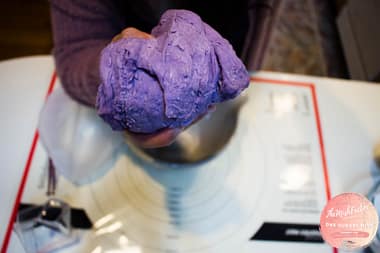Confession: I never thought I’d write about dumplings when I started this blog. Don’t get me wrong, I love stuffed goodies (hence the ravioli vs dumpling showdown) but just like ravioli, I’m no expert. I’m a foodie, sure; trust this household has all the dumpling takeout coupons on deck. But to write about how to make a continental treasure? Call the reinforcements. But I hope you find my references, fumbles, and tips endearing–a fellow enthusiast to journey with–because while I’ll eat any dumpling I make, there have been many a “trial and error”.
*This site contains affiliate links, if you click on a link and buy something, it just means you’ve helped me get a commission to pay for my blog server. It does not impact any pricing of goods purchased, consider it as foodie wanderlusts mutually supporting each other.
Many thanks, XOXO Mish*
So what are the differences in ravioli and dumpling dough?
Ingredient wise, the main difference between ravioli dough and dumpling dough (minus the color additives I chose to use) are eggs; recall water was used to get the ideal pasta dough texture! Delicious, joyous eggs. Honestly I could do a whole post alone on the many aspects of eggs, but that’s neither here nor there. Dumpling dough is softer due to the lack of eggs which act as a binder. Think of eggs as a structural support beam, allowing you to put the dough through more. It gives the ravioli more “bite” or “bounce” versus a dumpling.
But wait!!! Some people add salt to their dumpling dough?! Yes, the same way we salt vegetables and bland food. The same way the paprika lent flavor to the ravioli dough in the previous post. While it is true that dumpling dough and stuffed pastas are vehicles for more food and flavor, that doesn’t mean we should forget that they too can be flavorful. Salting pasta water is both practical from a speed to boil aspect as well as flavor component. Since dumplings are cooked in many fashions (steamed/pan cooked/fried) it makes sense to potentially add in the flavor earlier in the process.
But wait!!! Some people add salt to their dumpling dough?!
I won’t be adding salt to this dough (as I will also be repurposing leftover dough into delicious scallion pancakes) but it does add flavor. I’ll spare everyone the salt rampage and point anyone who loves to hear about nuanced history or learn why salt is so important to many world cultures and history–like how Venice secured its initial wealth and fame, why Salt Wars are real, and how depending on what you eat you don’t need as much additive salt–go read Mark Kurlansky’s book (Salt: A World History). You’re welcome.
One other distinguishing note–
Is that a well made dumpling wrapper tends to have thinner edges than stuffed pastas and other filled carbs. Why? Well its rather ingenious. Since you have to close a wrapper, you effectively have double the thickness if you kept the wrapper the same thickness throughout the entire carb. If you thin the edges, the additive wrapping will in theory net to the same thickness as the rest of the non-folded parts. Oof, that was as physics-oriented as I wish to get on here today but it’s not wrong ‘ya know? This does also mean that while pasta machines exist to make ravioli and pastas easier and faster to make, there are very limited shortcuts when it comes to homemade dumpling wrappers. You’ve been warned!

Effectively dough ratio is:
2:1 grams of All Purpose Flour to milliliters Water
Purple dough is made with
300 g All Purpose Flour
150 mL refrigerated red cabbage water
The extra, uncolored dough I made to show how contrasting it is to the purple dough was made with
150 g All Purpose Flour
75 mL room temperature water
I call out the temperature of the water as the warmer the water it is, the softer the resultant dough ended up being.
Super grateful for the feedback from my friend’s momma from when we Facetime made dumplings together, I’m such a novice compared to her and her momma but love her letting me join their family time 🖤
And for those who are looking for cooking instructions, much like ravioli, about 8 minutes of steaming or pan frying for fresh dumplings, 10 for frozen, increase if you have larger dumplings.
So which homemade eat won?
Did you try making a comparison? As you may have guessed I personally think dumplings win out (and according to Google Trends, the term homemade dumplings were searched 15% more frequently than homemade ravioli in the past year), butttttt the joy of food is we all have our preferences! Are you more of a bouncy-pasta person or a suggestion of dough wrapped goodness fan? Who wins in the Battle of the Noods for you?

Stay Hungry
XOXO
Mish ♥

